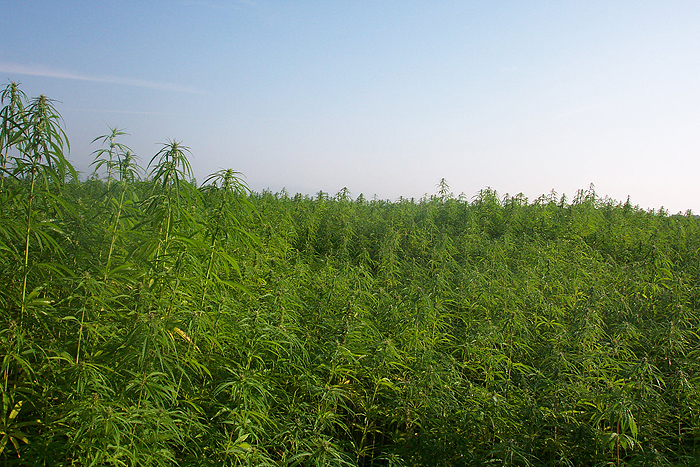Of all the various uses for Cannabis plants, add another, “green” one to the mix.

Researchers at UConn have found that the fiber crop Cannabis sativa, known as industrial hemp, has properties that make it viable and even attractive as a raw material, or feedstock, for producing biodiesel – sustainable diesel fuel made from renewable plant sources.
The plant’s ability to grow in infertile soils also reduces the need to grow it on primary croplands, which can then be reserved for growing food, says Richard Parnas, a professor of chemical, materials, and biomolecular engineering who led the study.
“For sustainable fuels, often it comes down to a question of food versus fuel,” says Parnas, noting that major current biodiesel plants include food crops such as soybeans, olives, peanuts, and rapeseed. “It’s equally important to make fuel from plants that are not food, but also won’t need the high-quality land.”
Industrial hemp is grown across the world, in many parts of Europe and Asia. Fiber from the plant’s stalk is strong, and until the development of synthetic fibers in the 1950s, it was a premier product used worldwide in making rope and clothing.
Today, there are still parts of the world that rely on Cannabis stalks as a primary fiber, mainly because of its ability to grow “like a weed,” without requiring lots of water, fertilizers, or high-grade inputs to flourish. But the seeds, which house the plant’s natural oils, are often discarded. Parnas points out that this apparent waste product could be put to good use by turning it into fuel.

“If someone is already growing hemp,” he says, “they might be able to produce enough fuel to power their whole farm with the oil from the seeds they produce.” The fact that a hemp industry already exists, he continues, means that a hemp biodiesel industry would need little additional investment.
With his graduate student Si-Yu Li and colleagues James Stuart of the Department of Chemistry and Yi Li of the Department of Plant Sciences, Parnas used virgin hemp seed oil to create biodiesel using a standardized process called transesterification. The group then tested the fuel for a suite of characteristics in the Biofuels Testing Laboratory at UConn’s Center for Environmental Science and Engineering.
The hemp biodiesel showed a high efficiency of conversion – 97 percent of the hemp oil was converted to biodiesel – and it passed all the laboratory’s tests, even showing properties that suggest it could be used at lower temperatures than any biodiesel currently on the market.
Although growing hemp is not legal in the U.S., Parnas hopes that the team’s results will help to spur hemp biodiesel production in other parts of the world. UConn holds a patent on a biodiesel reactor system that could be customized to make biodiesel from a range of sustainable inputs, hemp included.
“Our research data could make buying a reactor system with our technology more attractive,” says Parnas. “If we have data for the production of many different feedstocks, we can tailor the system to meet the company’s needs.”
Parnas, Yi Li, and colleagues Steven Suib of the Department of Chemistry, Fred Carstensen of the Department of Economics, and Harrison Yang of the Department of Natural Resources and the Environment are preparing to build a pilot biodiesel production facility using a two-year, $1.8 million grant from the Department of Energy.
The reactor will be capable of producing up to 200,000 gallons of biodiesel per year, and while this production rate is small in comparison to commercial biodiesel reactors, the main use of the facility will be to test new ways to produce biodiesel, including catalysts and feedstocks. Ultimately, the team will perform economic analyses on commercializing their methods.
As for other industries that utilize Cannabis plants, Parnas makes a clear distinction between industrial hemp, which contains less than 1 percent psychoactive chemicals in its flowers, and some of its cousins, which contain up to 22 percent.
“This stuff,” he points out, “won’t get you high.”



